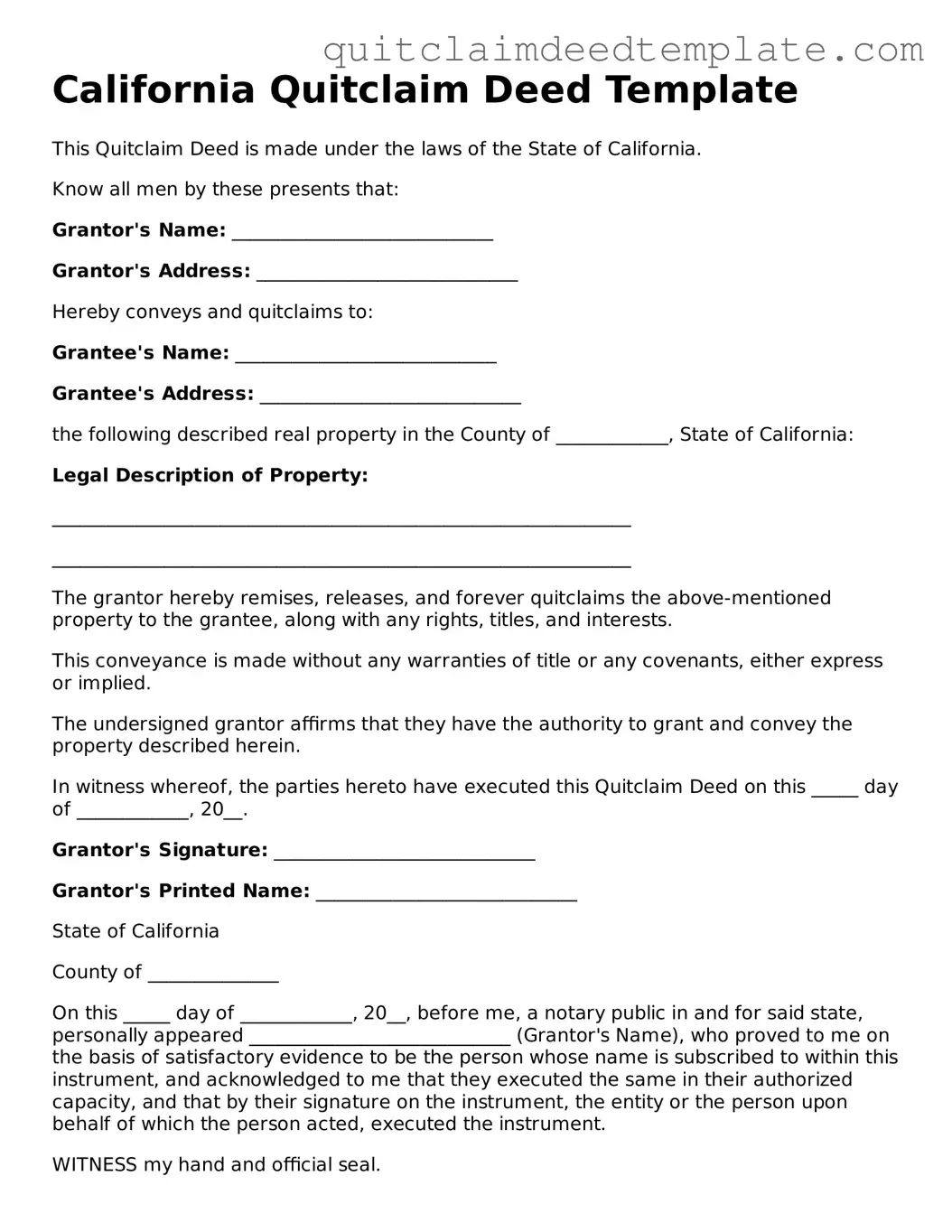Documents used along the form
When completing a property transfer in California, the Quitclaim Deed form is often accompanied by several other documents. Each of these forms serves a specific purpose in ensuring a smooth and legally compliant transaction. Below is a list of commonly used forms and documents that may accompany the Quitclaim Deed.
- Grant Deed: This document conveys property ownership and guarantees that the grantor has not transferred the property to anyone else. It provides more assurance to the grantee compared to a quitclaim deed.
- Property Transfer Tax Statement: This form is required to report any transfer taxes due on the property. It helps local authorities assess and collect taxes associated with the property transfer.
- Title Insurance Policy: This document protects the buyer from potential disputes over property ownership. It ensures that the title is clear and free from liens or claims that could affect ownership.
- Affidavit of Death: In cases where a property owner has passed away, this affidavit may be needed to establish the transfer of property rights to heirs or beneficiaries.
- Preliminary Change of Ownership Report: This report must be filed with the county assessor's office to notify them of the change in ownership. It helps ensure accurate property tax assessments.
- Power of Attorney: If the grantor is unable to sign the Quitclaim Deed personally, a Power of Attorney may be used to authorize another individual to sign on their behalf.
- Trustee’s Deed: This document is used when property is transferred from a trust. It outlines the authority of the trustee to convey the property to the designated beneficiary.
- Escrow Instructions: These instructions guide the escrow agent in handling the transaction. They outline the terms of the sale and ensure that all parties fulfill their obligations.
Understanding these additional forms and documents can facilitate a more efficient property transfer process. Each document plays a vital role in safeguarding the interests of all parties involved in the transaction.
